
Ice Fisherman
Ice Fisherman Rock Cut State Park, Il. after Rime Ice Storm 01.07.2021
Rime ice is a deposit of feathery needles of ice that forms when supercooled cloud or fog droplets rapidly freeze when coming in contact with an object. These feathery needles of ice crystals transform the trees and bushes into beautiful feathery ice crystal sculptures.

Trestle #469
This is the UP/C & NW Rail Road Trestle Bridge (# 469) over the Rock River in south Rockford Illinois after a Rime ice storm. Built in 1896 this is a Warren Deck Truss Superstructure Type, one track wide, 768 feet long, 15 feet above the river. Built by Wisconsin Bridge & Iron Company of Milwaukee, WI. Currently owned by the Union Pacific Railroad. View from the West bank looking North East across the Rock River in the morning fog after the 01.04.2021 Rime Ice Storm.

S Curve Blacktop
S Curve Blacktop Rock Cut State Park, Il. after Rime Ice Storm 01.07.2021
Rime ice is a deposit of feathery needles of ice that forms when supercooled cloud or fog droplets rapidly freeze when coming in contact with an object. These feathery needles of ice crystals transform the trees and bushes into beautiful feathery ice crystal sculptures.

GATX 2698
GATX is the General American Transportation Corporation GM Diesel engine at the South Rockford, Il. Union Pacific Railroad line. Photographed after the Rime Ice Storm 01.04.2021. Rime ice is a deposit of feathery needles of ice that forms when supercooled cloud or fog droplets rapidly freeze when coming in contact with an object.

Juvenile Bald Eagle
There is a difference between a juvenile and an adult bald eagle. Adult Bald Eagles have white heads and tails with dark brown bodies and wings. Their legs and bills are bright yellow. Immature birds have mostly dark heads and tails; their brown wings and bodies are mottled with white in varying amounts. After six months, the immature eagle begins to turn lighter brown. Young eagles are often larger than adults. This is because a young eagle's tail and wing feathers are longer than an adult's feathers. Even though this may be, young eagles still weigh less than adults.

Red Fox out of Brush
Red Foxes at the Confluence of the Apple River and Coon Creek outside of rural Stockton in Northern Illinois. The red fox is the largest of the true foxes & one of the most widely distributed members of the order Carnivora, being present across the entire Northern Hemisphere including most of North America, Europe and Asia plus parts of Northern Africa. The red fox's resourcefulness has earned it a legendary reputation for intelligence and cunning. Red foxes are solitary hunters who feed on rodents, rabbits, birds, and other small game. Canon 1Dx with EF series II 100 to 400 zoom lens.
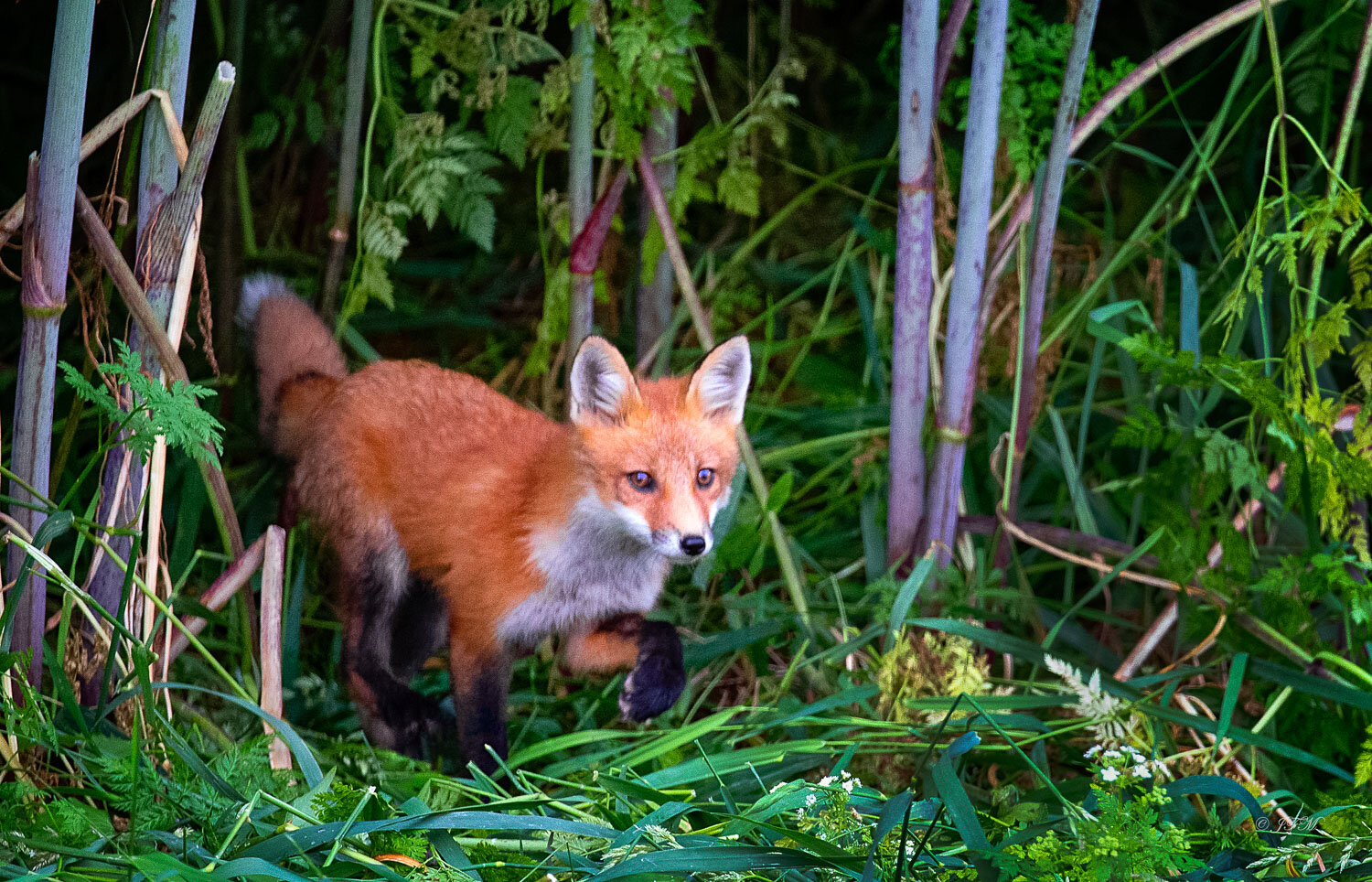
Red Fox out of Brush Raised Paw
Red Foxes at the Confluence of the Apple River and Coon Creek outside of rural Stockton in Northern Illinois. The red fox is the largest of the true foxes & one of the most widely distributed members of the order Carnivora, being present across the entire Northern Hemisphere including most of North America, Europe and Asia plus parts of Northern Africa. The red fox's resourcefulness has earned it a legendary reputation for intelligence and cunning. Red foxes are solitary hunters who feed on rodents, rabbits, birds, and other small game. Canon 1Dx with EF series II 100 to 400 zoom lens.
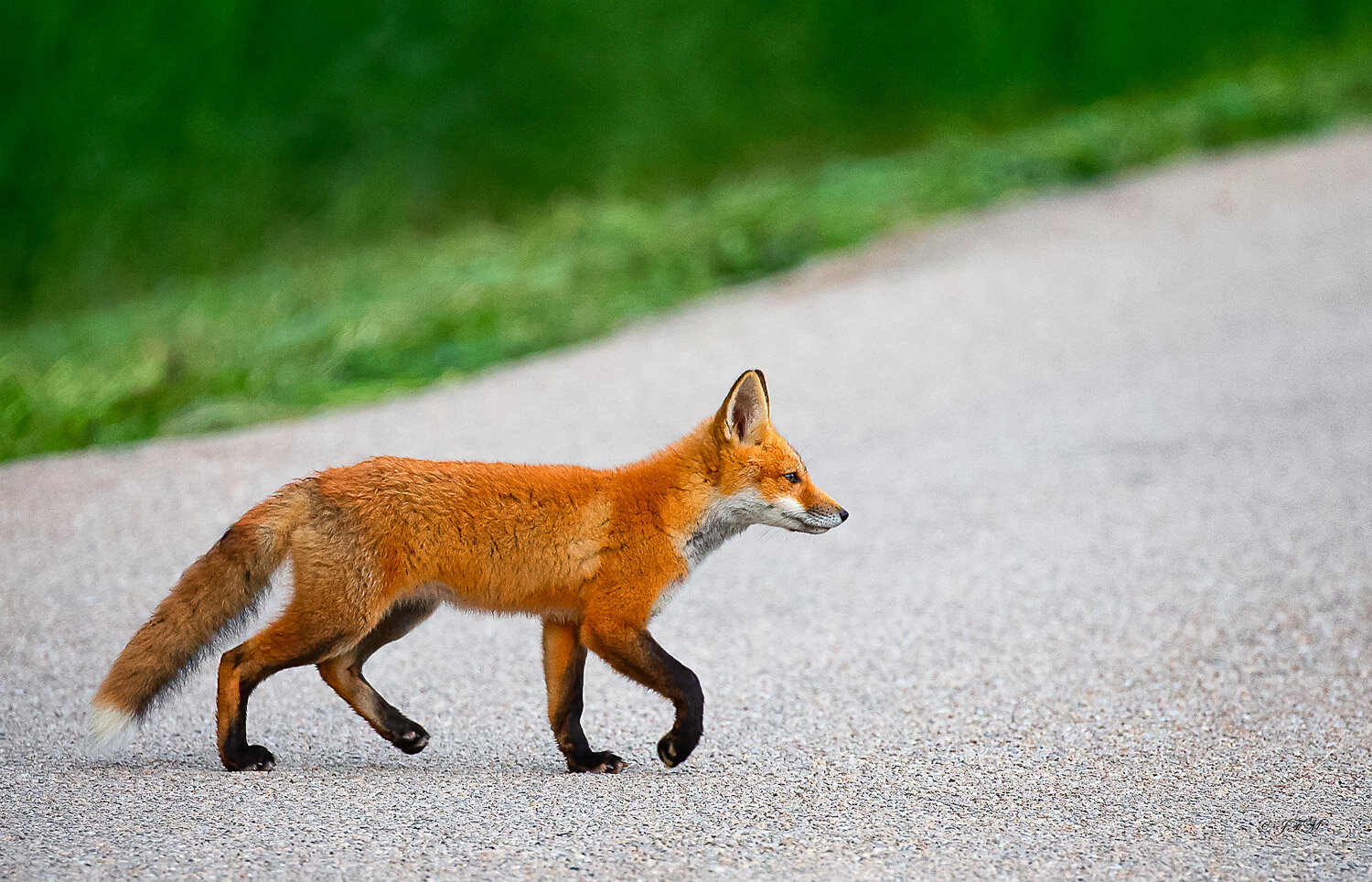
Red Fox Profile
Red Foxes at the Confluence of the Apple River and Coon Creek outside of rural Stockton in Northern Illinois. The red fox is the largest of the true foxes & one of the most widely distributed members of the order Carnivora, being present across the entire Northern Hemisphere including most of North America, Europe and Asia plus parts of Northern Africa. The red fox's resourcefulness has earned it a legendary reputation for intelligence and cunning. Red foxes are solitary hunters who feed on rodents, rabbits, birds, and other small game. Canon 1Dx with EF series II 100 to 400 zoom lens.
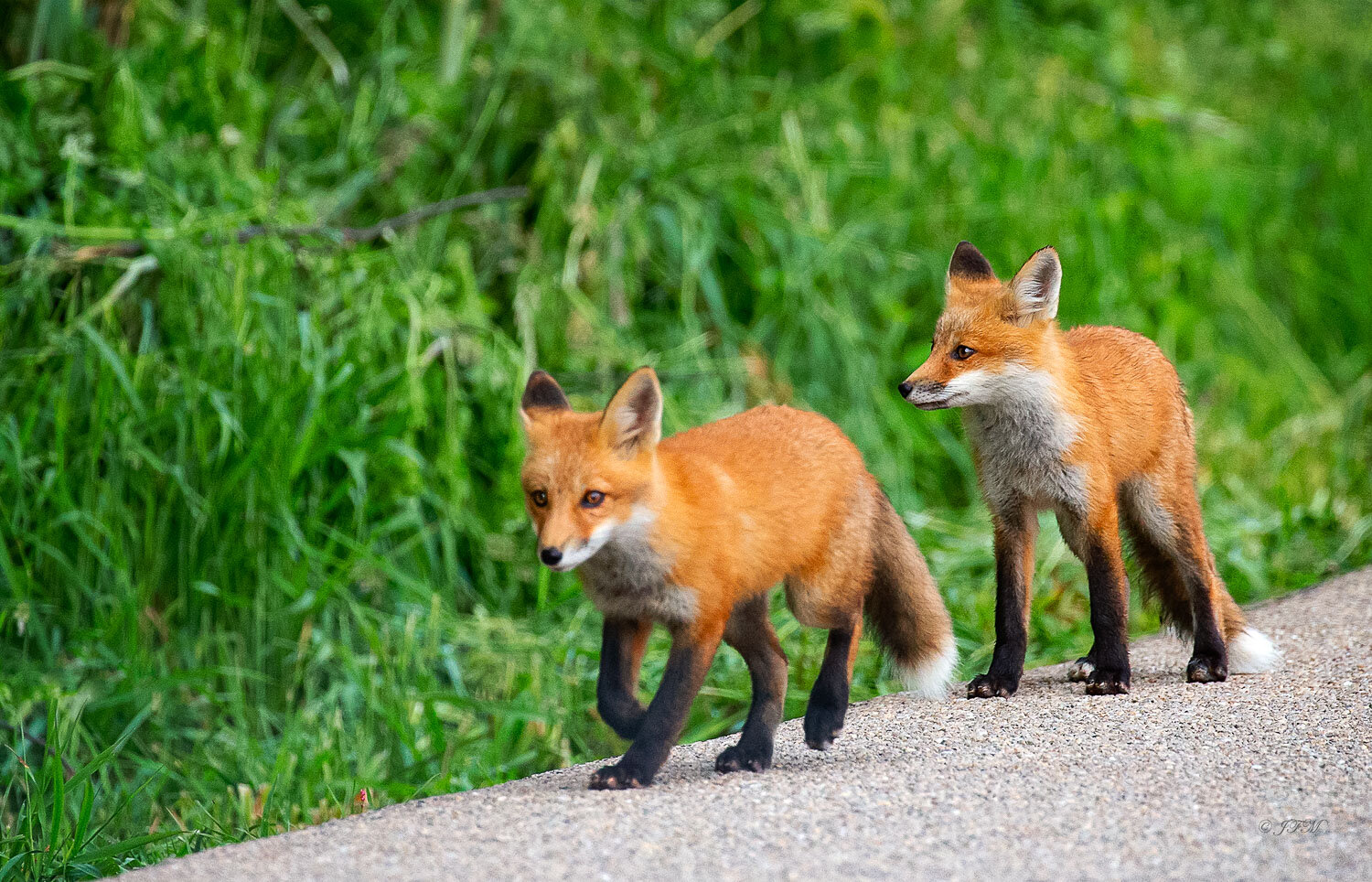
Two Red Foxes
Red Foxes at the Confluence of the Apple River and Coon Creek outside of rural Stockton in Northern Illinois. The red fox is the largest of the true foxes & one of the most widely distributed members of the order Carnivora, being present across the entire Northern Hemisphere including most of North America, Europe and Asia plus parts of Northern Africa. The red fox's resourcefulness has earned it a legendary reputation for intelligence and cunning. Red foxes are solitary hunters who feed on rodents, rabbits, birds, and other small game. Canon 1Dx with EF series II 100 to 400 zoom lens.

Red Fox Walking edge of Road
Red Foxes at the Confluence of the Apple River and Coon Creek outside of rural Stockton in Northern Illinois. The red fox is the largest of the true foxes & one of the most widely distributed members of the order Carnivora, being present across the entire Northern Hemisphere including most of North America, Europe and Asia plus parts of Northern Africa. The red fox's resourcefulness has earned it a legendary reputation for intelligence and cunning. Red foxes are solitary hunters who feed on rodents, rabbits, birds, and other small game. Canon 1Dx with EF series II 100 to 400 zoom lens.

Green Peacock Southeast Asia
The green Southeast Asia peacock has green and bronze body feathers, iridescent blue and green plumage, mostly metallic blue and green. A male Peacock’s tail feathers, or coverts, spread out in a distinctive train that is more than 60 percent of the bird's total body length and boast colorful "eye" markings of blue, gold, red, and other hues. The large train is used in mating rituals and courtship displays.
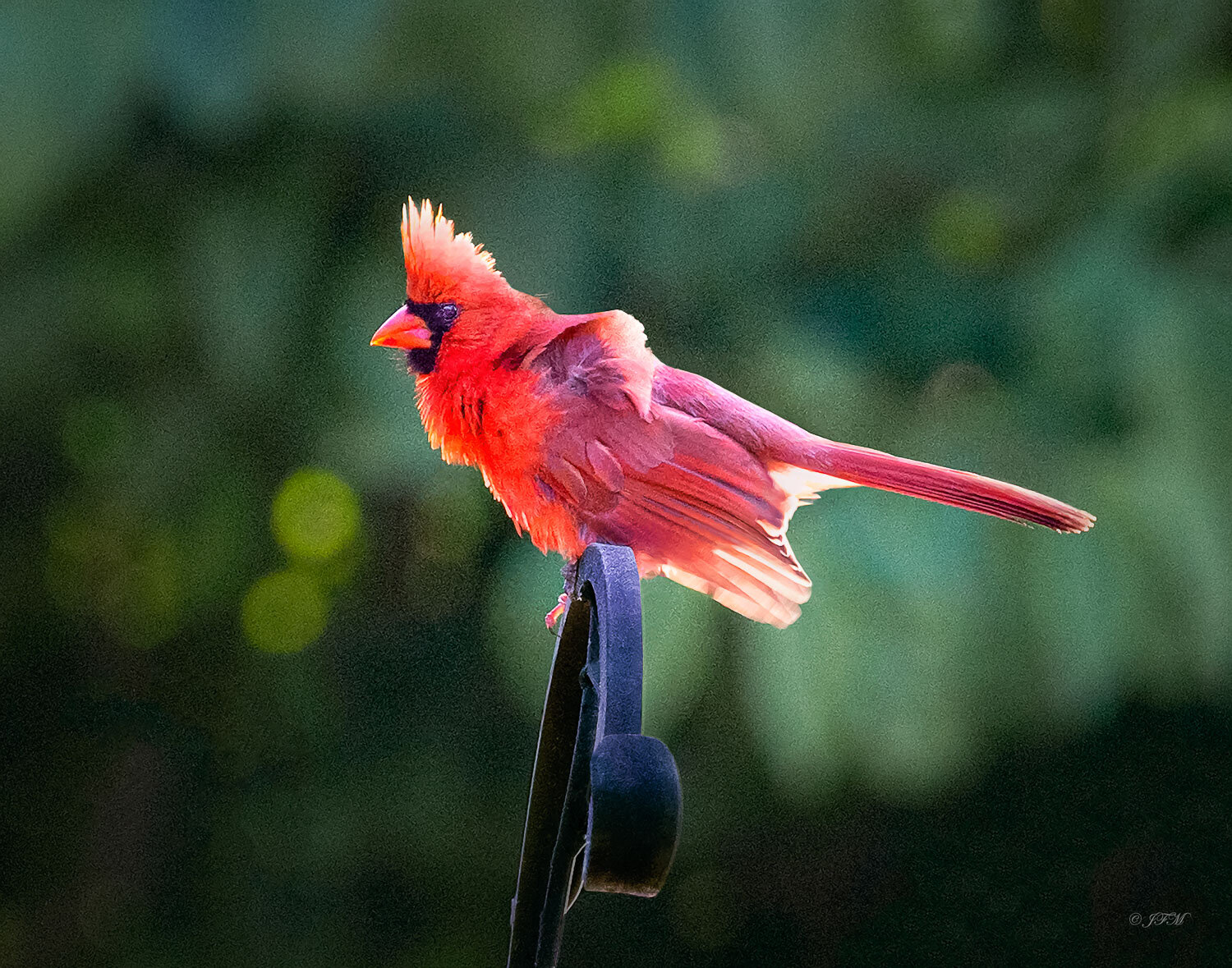
Ready to Fly
The Northern Cardinal songbirds, raised crests on heads, orange-red, cone-shaped bills for cracking seeds. Males are a brilliant red color (from the food they eat) except for a black mask on their face. They are a medium-sized bird (8 inches). The female slightly smaller in shades of light brown, with reddish highlights & dark coloration around the eyes & beak. They are not found often in forests. They prefer the edges of forests and grassland landscapes with thickets and shrubbery they can hide and nest in. Cardinals, in the family Cardinalidae, are passerine birds found in North and South America. AKA cardinal-grosbeaks and cardinal-buntings.
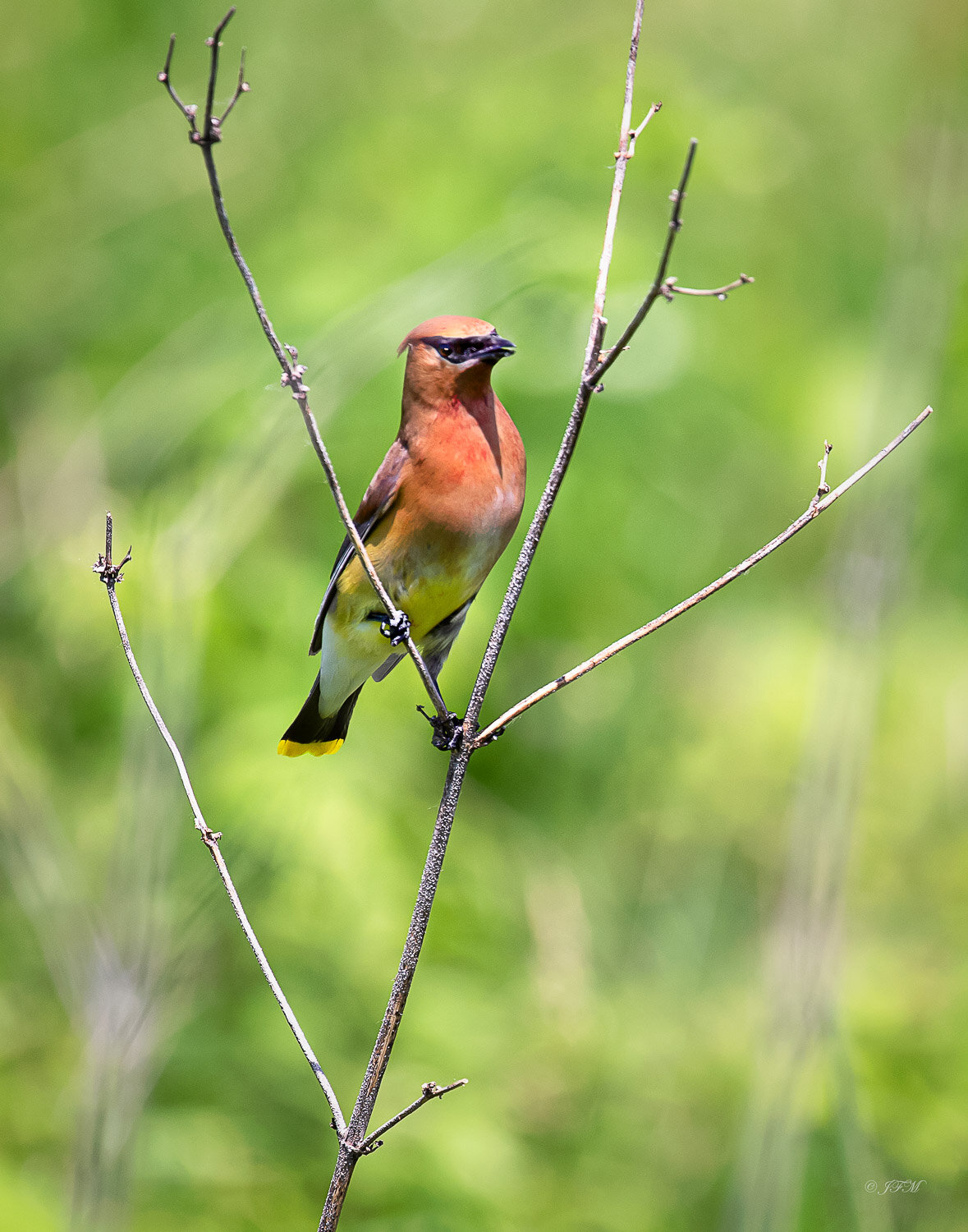
Cedar Waxwing
Cedar Waxwing is a medium-sized, mostly brown, gray, and yellow bird named for its wax-like wing tips. They are social birds that form large flocks, eat berries (usually Cedar berries) the year around & in the summer supplement it with flying insects. They typically feed while perched on a twig, but they’re also good at grabbing berries while hovering briefly just below a bunch.
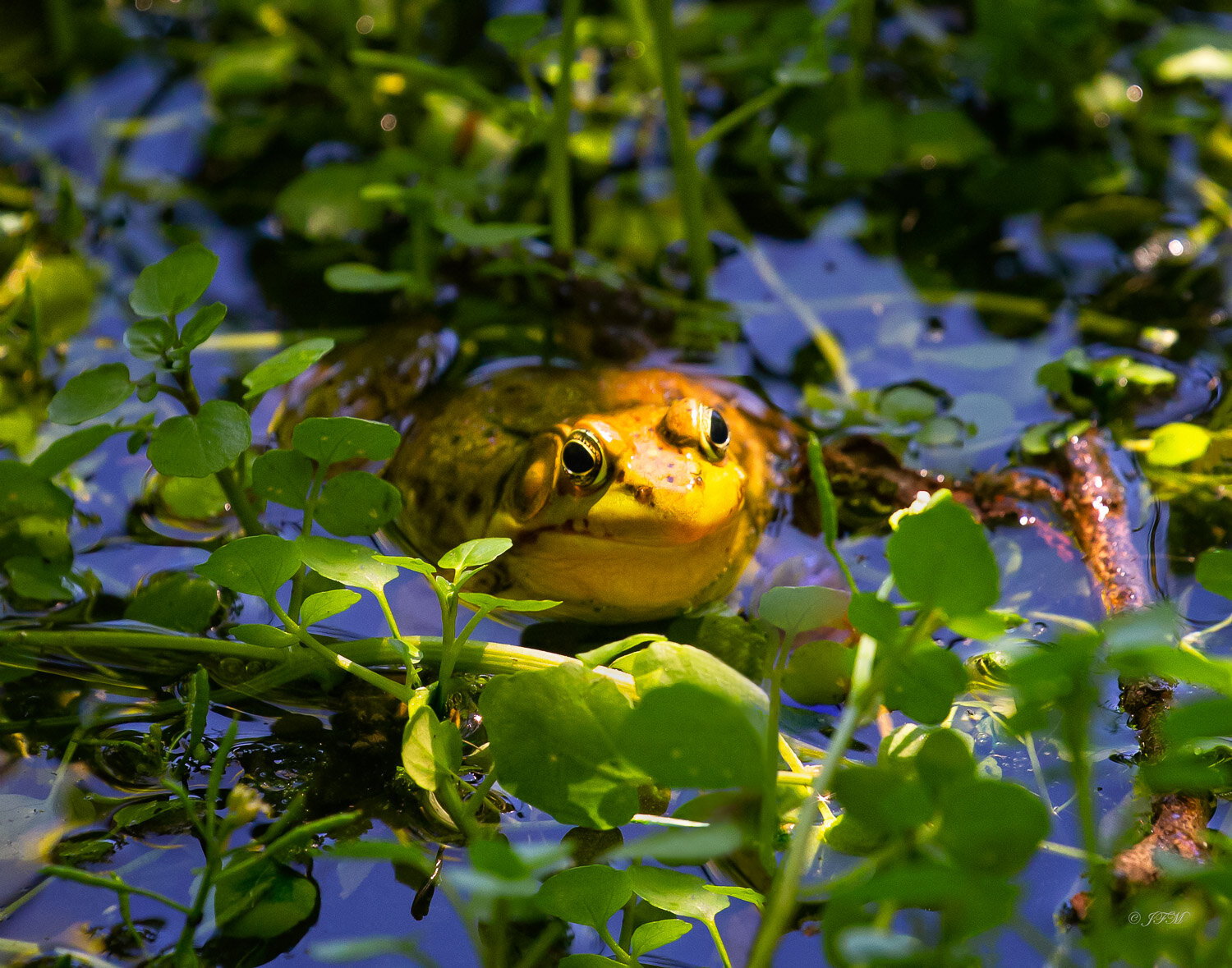
Ranid - True Frog
Ranid is an insectivorous usually semiaquatic web-footed amphibian with smooth moist skin and long hind legs used for jumping. This one was found in a pond at Severson Dells, Illinois.

American White Pelicans #1
Photo taken at Nygren Wetlands, Rockton, Illinois. Most migrate south for breeding but some nonbreeding birds remain through summer on winter range. The Illinois migration flocks usually arrive in May & staying until September or October. Adults feed by either wading in shallow water or swim & submerge their pouches to scoop up a meal.

American White Pelicans #2
Photo taken at Nygren Wetlands, Rockton, Illinois. Most migrate south for breeding but some nonbreeding birds remain through summer on winter range. The Illinois migration flocks usually arrive in May & staying until September or October. Adults feed by either wading in shallow water or swim & submerge their pouches to scoop up a meal.

American White Pelicans #3
Photo taken at Nygren Wetlands, Rockton, Illinois. Most migrate south for breeding but some nonbreeding birds remain through summer on winter range. The Illinois migration flocks usually arrive in May & staying until September or October. Adults feed by either wading in shallow water or swim & submerge their pouches to scoop up a meal.

American White Pelicans #4
Photo taken at Nygren Wetlands, Rockton, Illinois. Most migrate south for breeding but some nonbreeding birds remain through summer on winter range. The Illinois migration flocks usually arrive in May & staying until September or October. Adults feed by either wading in shallow water or swim & submerge their pouches to scoop up a meal.
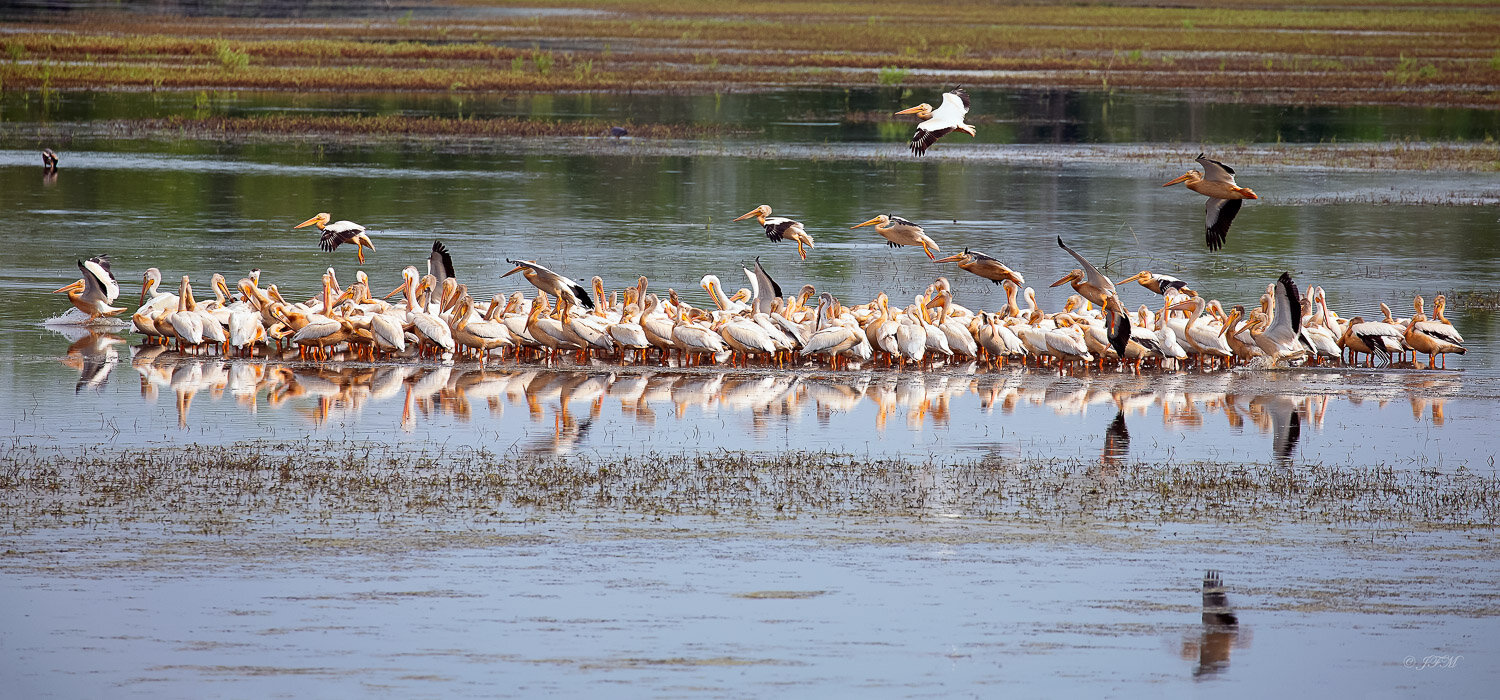
American White Pelicans #5
Photo taken at Nygren Wetlands, Rockton, Illinois. Most migrate south for breeding but some nonbreeding birds remain through summer on winter range. The Illinois migration flocks usually arrive in May & staying until September or October. Adults feed by either wading in shallow water or swim & submerge their pouches to scoop up a meal.
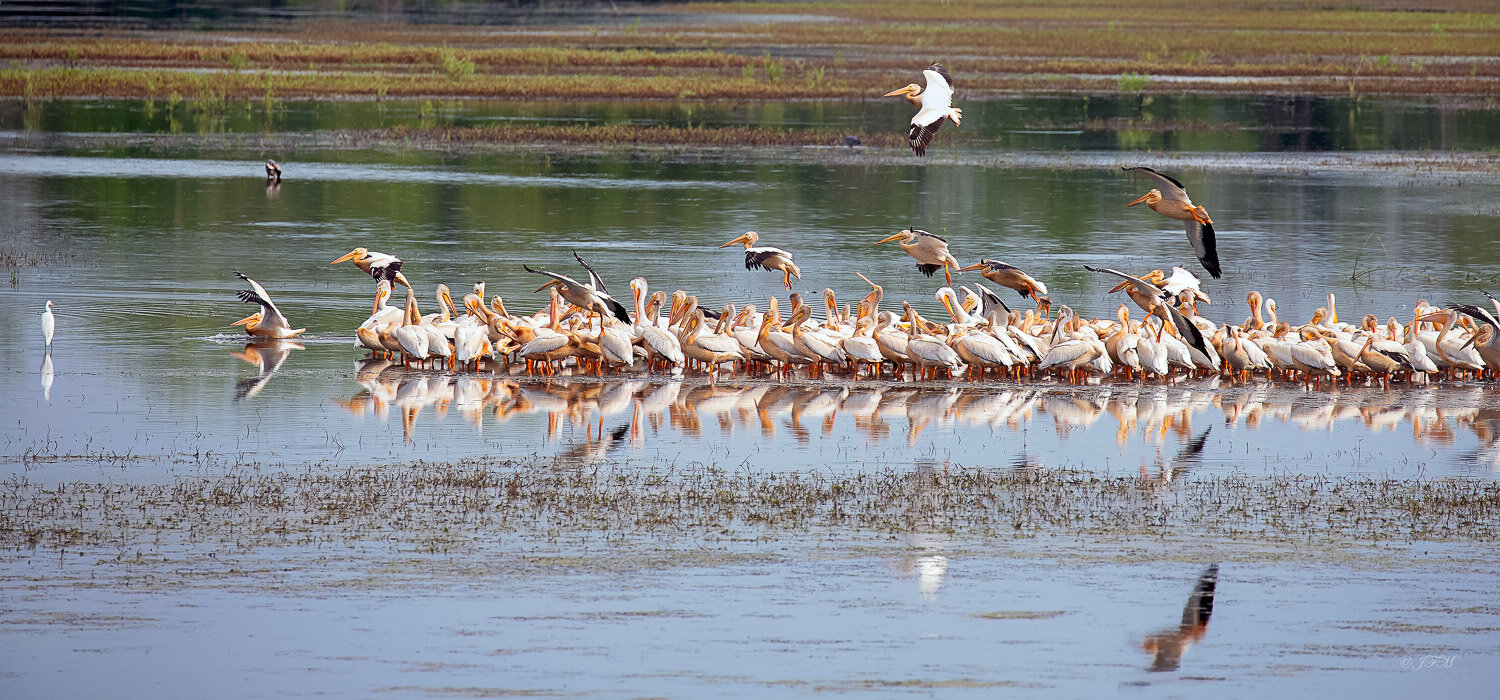
American White Pelicans #6
Photo taken at Nygren Wetlands, Rockton, Illinois. Most migrate south for breeding but some nonbreeding birds remain through summer on winter range. The Illinois migration flocks usually arrive in May & staying until September or October. Adults feed by either wading in shallow water or swim & submerge their pouches to scoop up a meal.
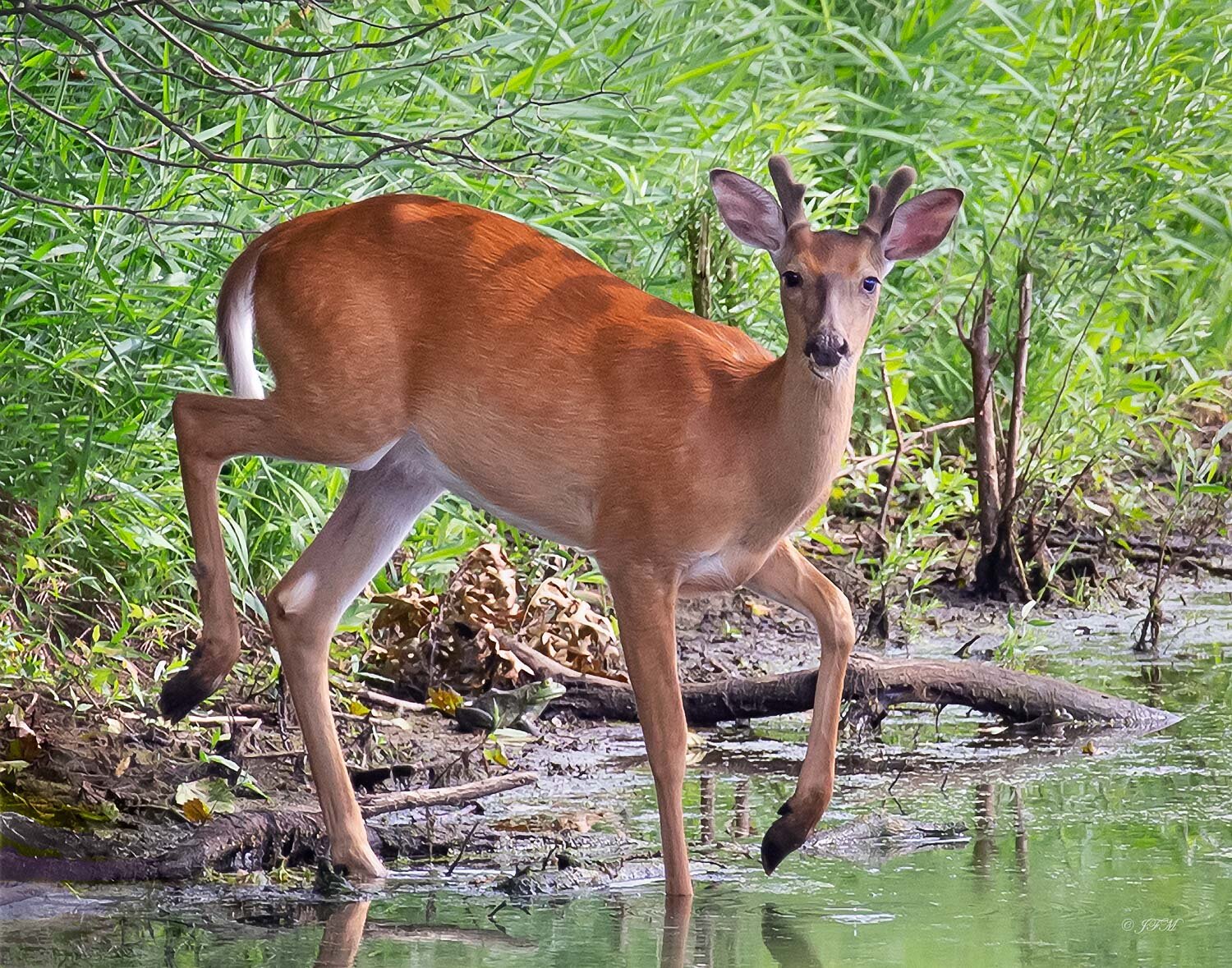
White Tailed Deer Buck
Photo taken at Nygren Wetlands, Rockton, Illinois. Whitetail or Virginia deer or White-tailed deer are the smallest members of the North American deer family. Male deer, called bucks, are easily distinguished in the summer and fall by their large set of antlers. New antlers are grown annually and fall off in the winter.
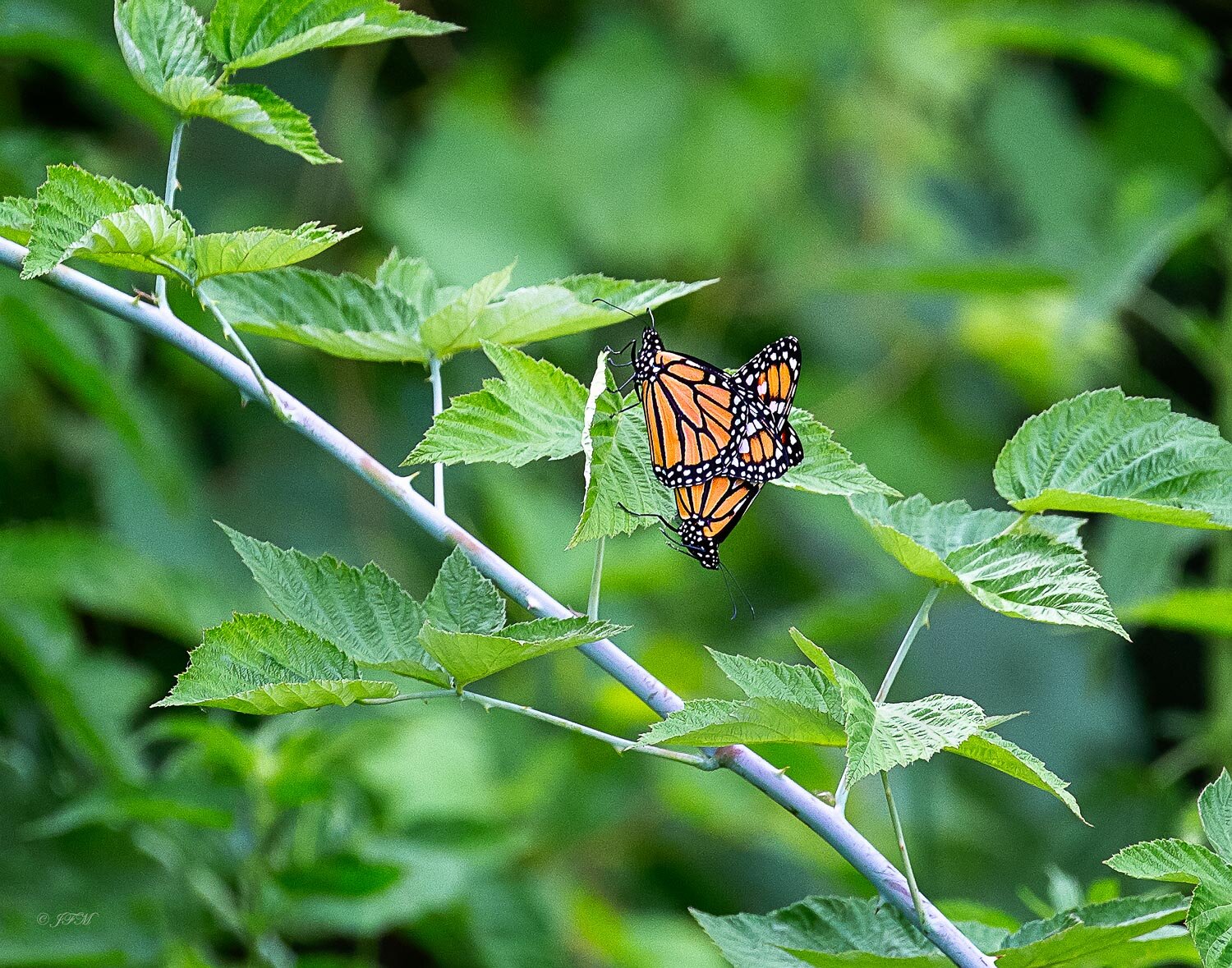
Monarch Butterflies Mating
Adult Monarchs make massive (the only two-way migratory butterfly) migrations from August-October, flying up to 3,000 miles south to hibernate along the California coast and in central Mexico in oyamel fir trees. They can travel 50-100 miles a day. It takes 5 generations to do this (just one way). They live for anywhere from 2 to 6 weeks*, & females lay eggs on the milkweed plant. Males mate throughout most of this period. Monarchs wing span: 3 3/8 - 4 7/8 inches (8.6 - 12.4 cm).
* Decreasing day length and temperatures, along with aging milkweed and other nectar sources triggers the birth of the super generation and their epic migration. They live eight times longer than their parents and grandparents- up to eight months, and travel10 times farther.

Take Flight #1
The Northern Cardinal songbirds, raised crests on heads, orange-red, cone-shaped bills for cracking seeds. Males are a brilliant red color (from the food they eat) except for a black mask on their face. They are a medium-sized bird (8 inches). The female slightly smaller in shades of light brown, with reddish highlights & dark coloration around the eyes & beak. They are not found often in forests. They prefer the edges of forests and grassland landscapes with thickets and shrubbery they can hide and nest in. Cardinals, in the family Cardinalidae, are passerine birds found in North and South America. AKA cardinal-grosbeaks and cardinal-buntings.

Take Flight #2
The Northern Cardinal songbirds, raised crests on heads, orange-red, cone-shaped bills for cracking seeds. Males are a brilliant red color (from the food they eat) except for a black mask on their face. They are a medium-sized bird (8 inches). The female slightly smaller in shades of light brown, with reddish highlights & dark coloration around the eyes & beak. They are not found often in forests. They prefer the edges of forests and grassland landscapes with thickets and shrubbery they can hide and nest in. Cardinals, in the family Cardinalidae, are passerine birds found in North and South America. AKA cardinal-grosbeaks and cardinal-buntings.

Take Flight #3
The Northern Cardinal songbirds, raised crests on heads, orange-red, cone-shaped bills for cracking seeds. Males are a brilliant red color (from the food they eat) except for a black mask on their face. They are a medium-sized bird (8 inches). The female slightly smaller in shades of light brown, with reddish highlights & dark coloration around the eyes & beak. They are not found often in forests. They prefer the edges of forests and grassland landscapes with thickets and shrubbery they can hide and nest in. Cardinals, in the family Cardinalidae, are passerine birds found in North and South America. AKA cardinal-grosbeaks and cardinal-buntings.

Take Flight #4
The Northern Cardinal songbirds, raised crests on heads, orange-red, cone-shaped bills for cracking seeds. Males are a brilliant red color (from the food they eat) except for a black mask on their face. They are a medium-sized bird (8 inches). The female slightly smaller in shades of light brown, with reddish highlights & dark coloration around the eyes & beak. They are not found often in forests. They prefer the edges of forests and grassland landscapes with thickets and shrubbery they can hide and nest in. Cardinals, in the family Cardinalidae, are passerine birds found in North and South America. AKA cardinal-grosbeaks and cardinal-buntings.

Eastern Tiger Swallowtail #1
Eastern Tiger Swallowtail butterfly is quite noticeable with markings of yellow and black stripes on its wings and body and a large wingspan of 3 1/2 – 6 1/2 inches. Males usually have minor orange and blue spots near the tail. Some females are brown or black, mimicking the poisonous Pipevine Swallowtail.
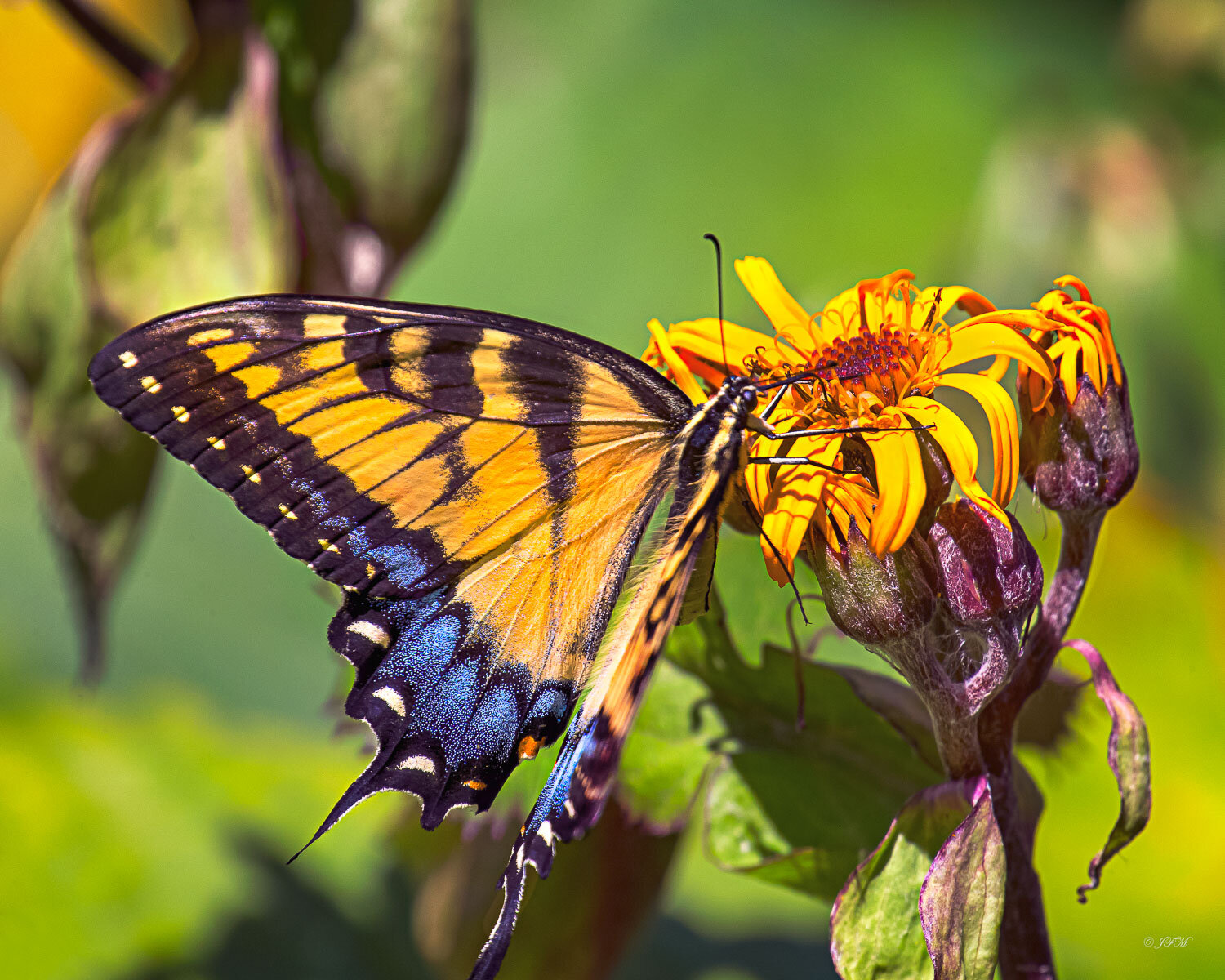
Eastern Tiger Swallowtail #2
Eastern Tiger Swallowtail butterfly is quite noticeable with markings of yellow and black stripes on its wings and body and a large wingspan of 3 1/2 – 6 1/2 inches. Males usually have minor orange and blue spots near the tail. Some females are brown or black, mimicking the poisonous Pipevine Swallowtail.
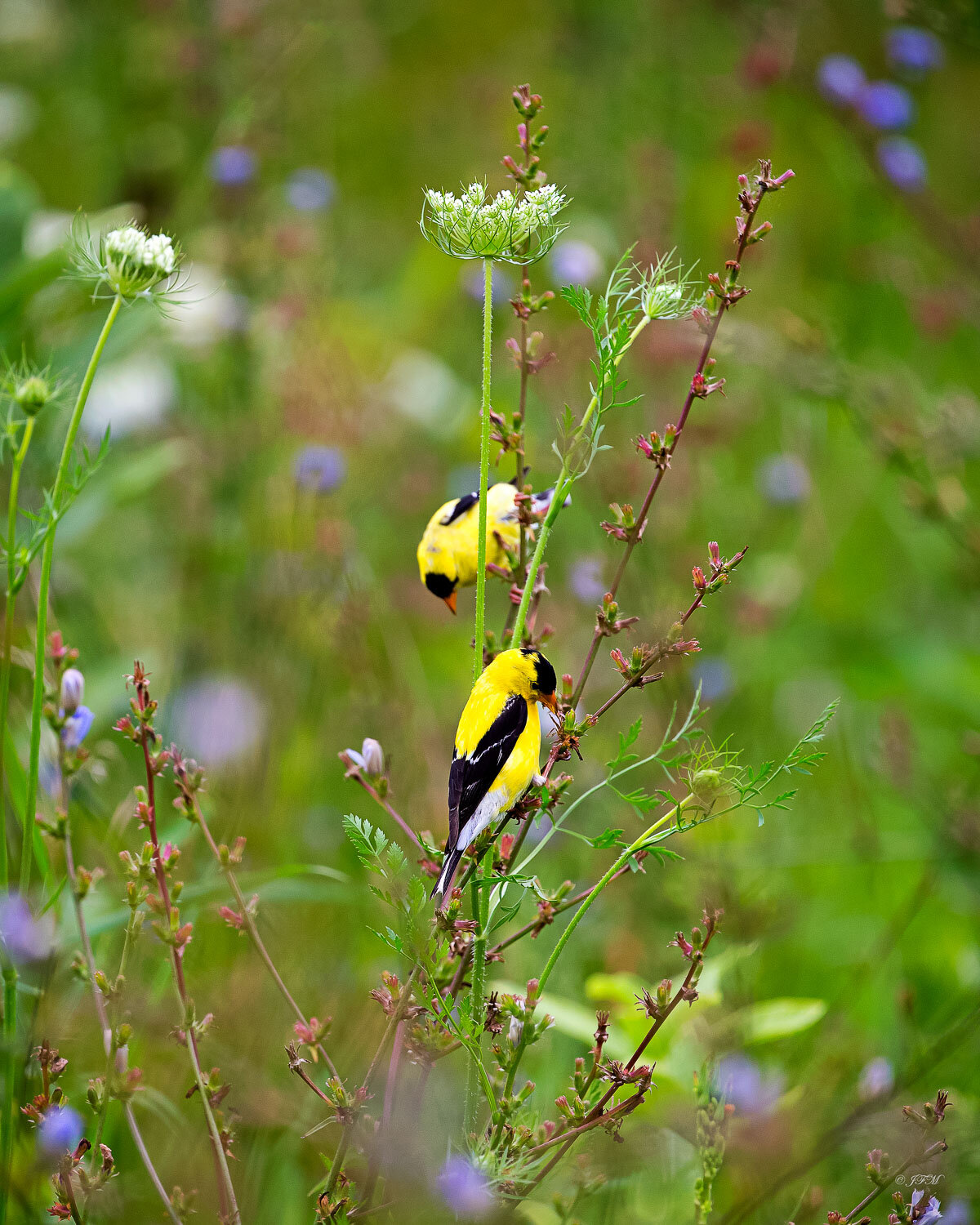
2 Male Am. Goldfinches #1
Am. Goldfinches forages on prairie flowers & Queen Anne’s Lace acrobatically to reach the seeds
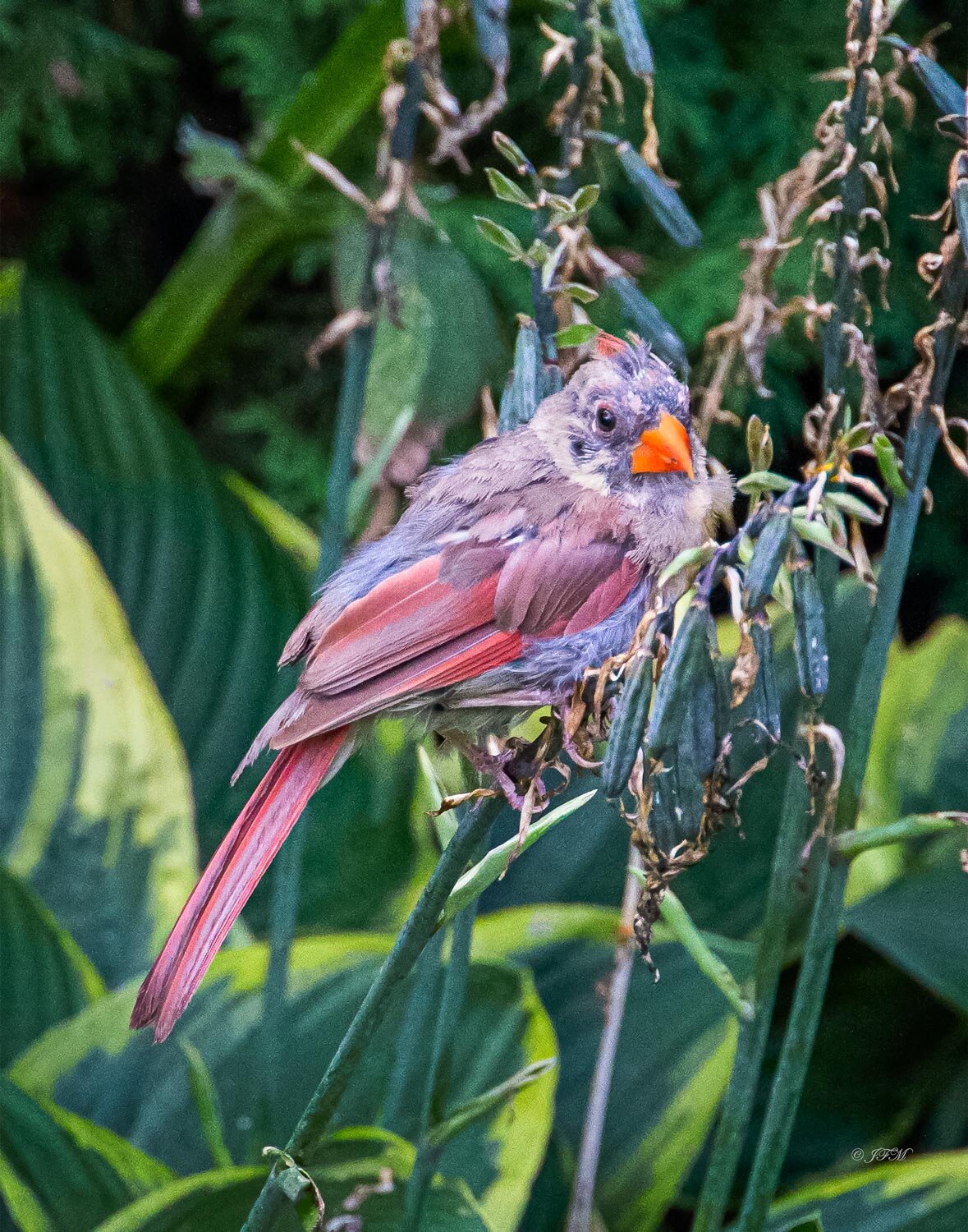
Molting Male Cardinal #1
Molting Male Cardinal Different coloration & scruffy looking due to August molting. Molting is a natural & regular process where some or all of a bird’s feathers are replaced gradually over some weeks. Molts are often timed to occur after nesting & before migrations (late summer). The reason for this timing is to fall in the lull between the strenuous activity of raising young & flying for thousands of miles. This way there is less stress upon the bird.
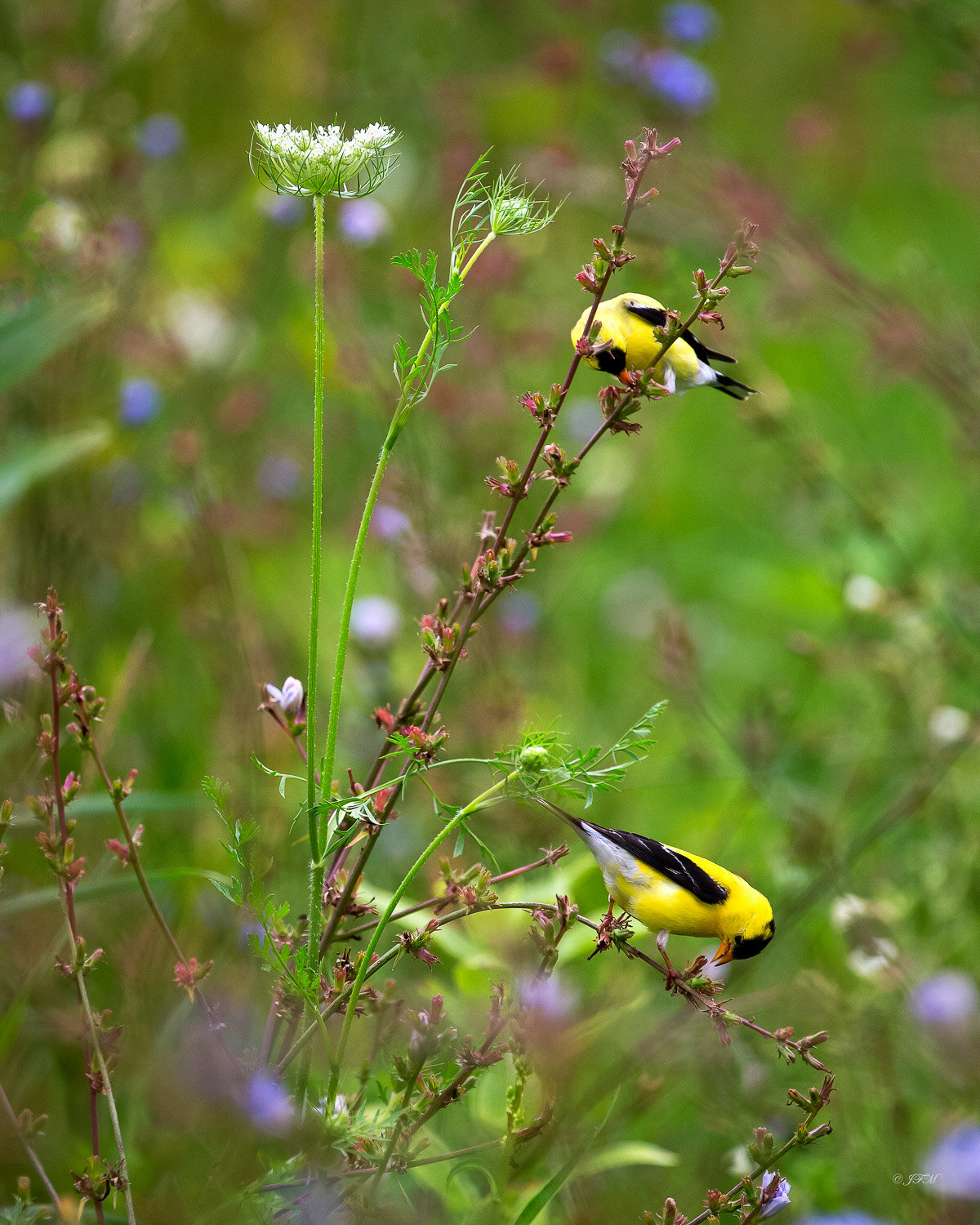
2 Male Am. Goldfinches #2
Am. Goldfinches forages on prairie flowers & Queen Anne’s Lace acrobatically to reach the seeds
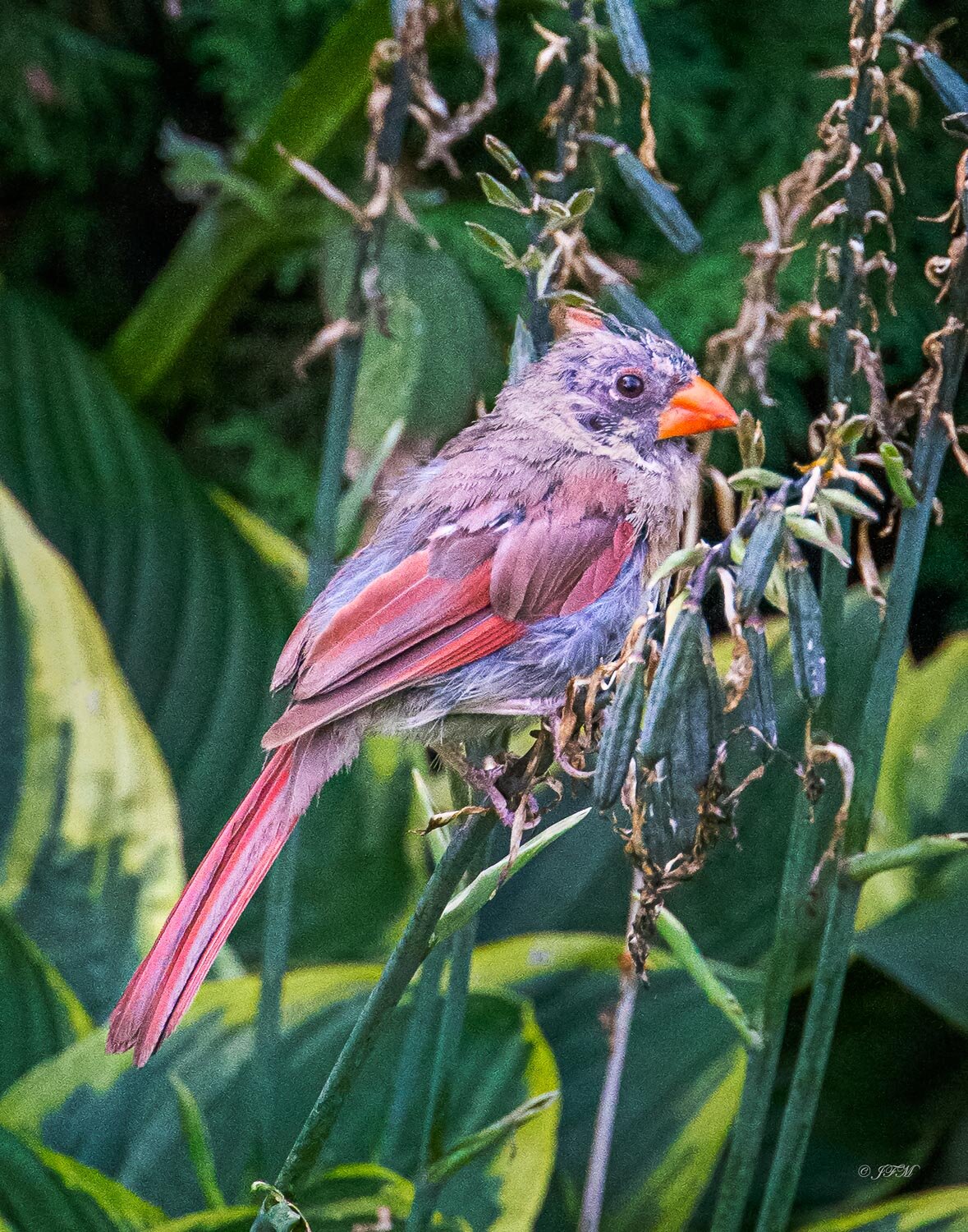
Molting Male Cardinal #2
Molting Male Cardinal Different coloration & scruffy looking due to August molting. Molting is a natural & regular process where some or all of a bird’s feathers are replaced gradually over some weeks. Molts are often timed to occur after nesting & before migrations (late summer). The reason for this timing is to fall in the lull between the strenuous activity of raising young & flying for thousands of miles. This way there is less stress upon the bird.
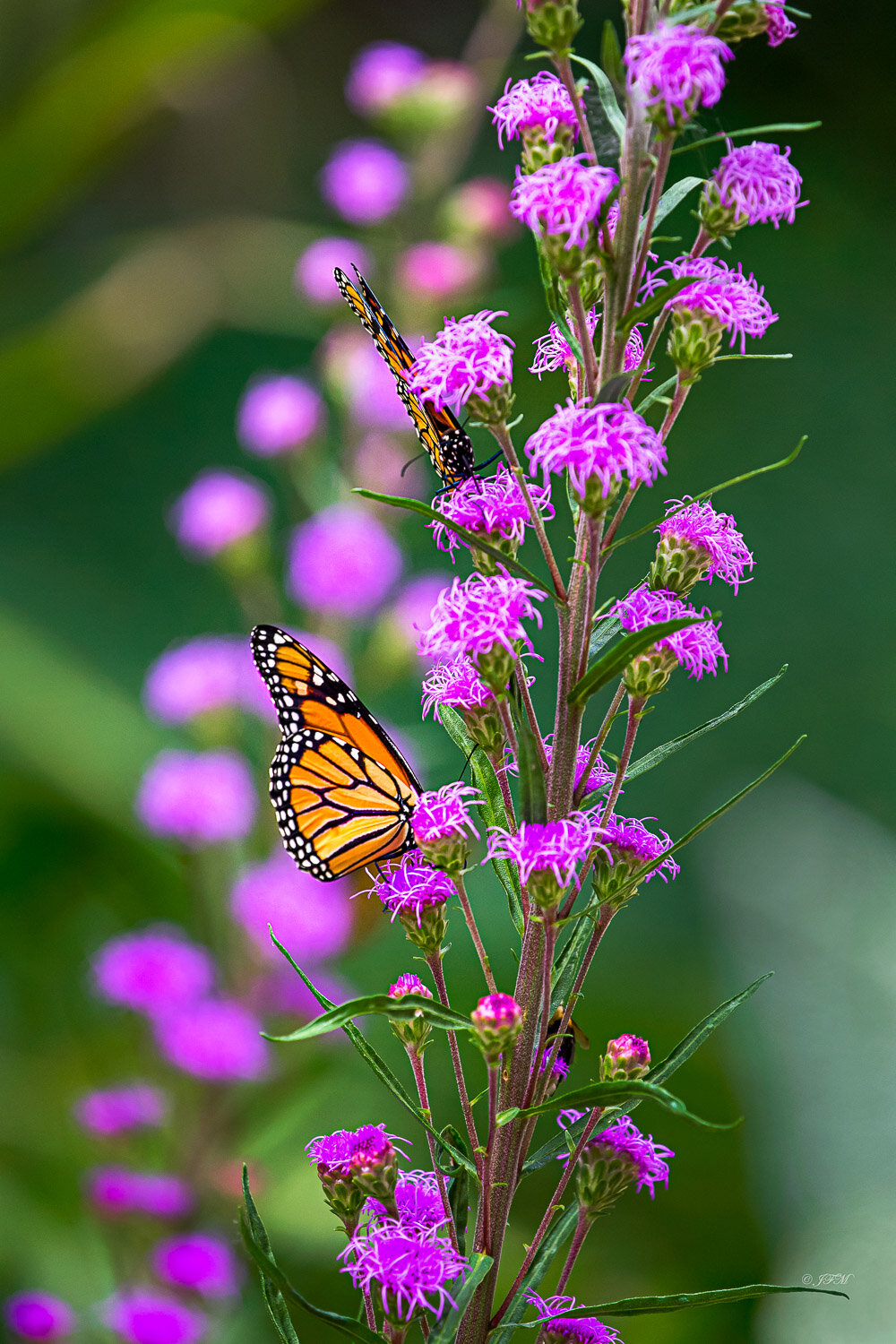
Monarch Butterflies # 1
Adult Monarchs make massive (the only two-way migratory butterfly) migrations from August-October, flying up to 3,000 miles south to hibernate along the California coast and in central Mexico in oyamel fir trees. They can travel 50-100 miles a day. It takes 5 generations to do this (just one way). They live for anywhere from 2 to 6 weeks*, & females lay eggs on the milkweed plant. Males mate throughout most of this period. Monarchs wing span: 3 3/8 - 4 7/8 inches (8.6 - 12.4 cm).
* Decreasing day length and temperatures, along with aging milkweed and other nectar sources triggers the birth of the super generation and their epic migration. They live eight times longer than their parents and grandparents- up to eight months, and travel10 times farther.

Monarch Butterflies # 2
Adult Monarchs make massive (the only two-way migratory butterfly) migrations from August-October, flying up to 3,000 miles south to hibernate along the California coast and in central Mexico in oyamel fir trees. They can travel 50-100 miles a day. It takes 5 generations to do this (just one way). They live for anywhere from 2 to 6 weeks*, & females lay eggs on the milkweed plant. Males mate throughout most of this period. Monarchs wing span: 3 3/8 - 4 7/8 inches (8.6 - 12.4 cm).
* Decreasing day length and temperatures, along with aging milkweed and other nectar sources triggers the birth of the super generation and their epic migration. They live eight times longer than their parents and grandparents- up to eight months, and travel10 times farther.
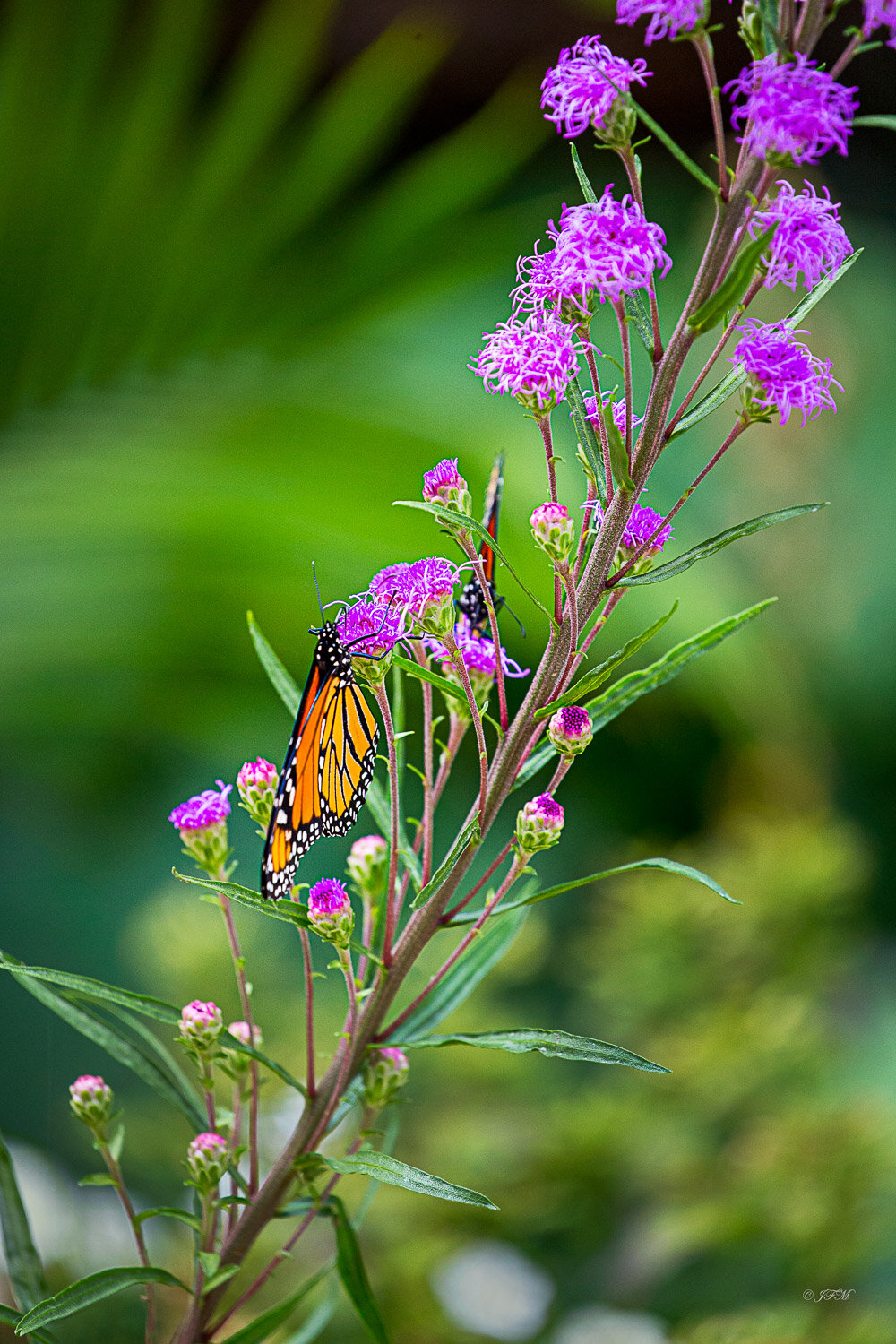
Monarch Butterflies # 3
Adult Monarchs make massive (the only two-way migratory butterfly) migrations from August-October, flying up to 3,000 miles south to hibernate along the California coast and in central Mexico in oyamel fir trees. They can travel 50-100 miles a day. It takes 5 generations to do this (just one way). They live for anywhere from 2 to 6 weeks*, & females lay eggs on the milkweed plant. Males mate throughout most of this period. Monarchs wing span: 3 3/8 - 4 7/8 inches (8.6 - 12.4 cm).
* Decreasing day length and temperatures, along with aging milkweed and other nectar sources triggers the birth of the super generation and their epic migration. They live eight times longer than their parents and grandparents- up to eight months, and travel10 times farther.
Northern Illinois


































